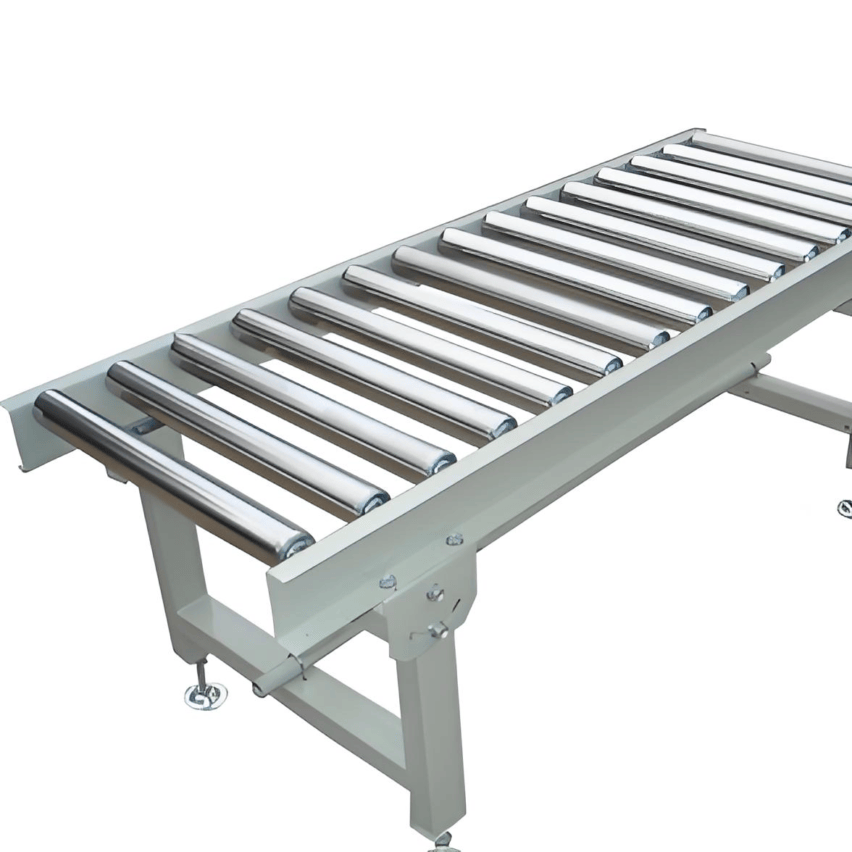Just contact factory automation, the face of a variety of conveyor line equipment is not confused? Especially the "round belt conveyor line" this thing, the name sounds simple, but the market has more models to let a person's eyes - do not panic, today we will use the vernacular to break open the kneaded say, let you half an hour from the rookie into the insiders!
First, what is the round belt conveyor line? First of all, find out what it can do
To put it bluntly, a round belt is aRounded polyurethane tape(there are rubber ones too) that go over the pulleys and work in circles. Unlike those flat belts, it relies heavily on theFriction pulls things along., especially good for passing small things or light loads to carry. Like you've seen:
- The assembly line for passing cups in the back kitchen of a milk tea shop
- Slippery little parcels on courier sorters
- Precision transfer of chip boards in electronics factories
…
Here comes the point! Its biggest advantage is in three words: cheap + quiet!The simple structure means fewer faults and less maintenance. Simple structure means fewer failures and less maintenance, especially for small and medium-sized factories with limited budgets. However, there are also obvious shortcomings...heavy lifting is beyond one's capabilities(single section over 60kg is a strain).Accuracy is also mediocre(Errors of 0.5mm or more are common), if your factory ships iron bumps every day, look at other types before it's too late.
Second, the purchase of five steps, the novice to avoid the pit guide
1. Figure out your own needs first - don't shoot yourself in the foot!
A lot of people ask "what kind of round belt is good", but you have to find out what you're using it for first:
- What's being shipped?
→ Food? SelectFood grade PU material(Don't use industrial tape for cheap. The Health Department will be looking for you.)
→ Small parts? Attention.Don't make the band too thick in diameter.(Φ3mm~Φ10mm most commonly used) - How heavy? How fast?
→ Single piece ≤ 30kg is the most secure (over it is easy to slip)
→ speed ≤ 10m/s (any faster and you'll have to change the timing belt) - How hostile is the environment?
→ Hot shop?Avoid regular PUs(floppiness above 80 degrees Celsius)
→ Heavy oil stains? ChooseOil Resistant Rubber"The regular model turns into a skating rink when it's exposed to oil.
2. Don't be fooled by the key parameters - read these three items
Merchants dumping a bunch of parameter lists? Keeping an eye on these three is enough:
- dead weight→ directly determines how thick the belt you choose (e.g. Φ8mm belt is easy to carry 30kg)
- gear ratio→ small pulley teeth ≥ 12 teeth to be reliable (too few teeth belt clicking)
- wheelbase→ by formulaA = [belt length - π(major wheel diameter + minor wheel diameter)/2] ÷ 2Calculate.5% extra marginEasy to adjust elasticity
3. The material is too deep! See it all in one table
| Material Type | Applicable Scenarios | Pitfall Warning |
|---|---|---|
| PU round belt | Food/light industry | Deform at 80°C! Don't touch it in the hot shop! |
| TPU round belt | High demand for wear resistance | Double the price, not worth it for non-heavy wear and tear |
| Rubber Round Belt | Oily/wet environments | Short lifespan, half-yearly replacement is the norm |
(As any old industry veteran knows: PU is enough for the average workshop, and it's more practical to save the money and buy two more sets of spare parts.)
4. Don't roll over when installing - remember the two tricks to stay safe!
- The wheels should be aligned!Axis skew >0.5mm/m, wait for the belt to run out of alignment and wear out.
- Tension don't overpower!Hand pressure on the middle of the band.Sinking 10~15mm is just right(Too tight and the bearings die prematurely, too loose and they slip like crazy.)
5. Maintenance costs are hidden - ask about these three sentences
- "Can your tape be connected on site?"(Buy the whole roll and cut it yourself? A bad joint is a waste of time.)
- "Does the warranty package not cover breakage?"(Poor quality wire core will be broken in 6 months, don't believe in the "two-year warranty" bullshit)
- "Is there an anti-runout roller?"Without it, you'd have to fix it in the middle of the night.
III. Self-questioning session - high-frequency soul-searching for novices
Q: The boss said the round belt is cheap, but why does it keep slipping when I put it on?
→ 80% of them.lack of tensionmaybeoiled wheelsIt's done! Adjust the tensioning screws first (don't overdo it), then rub the wheel grooves with alcohol - still slippery? Just change it.rough surface (of a textile material)(dark green, double the friction)
Q: What are some lazy tips for trying to save time on maintenance?
→ Do these two things every month:
- Roller SpottingSilicon lubricants(Don't use butter! It gets dusty and jams)
- Tape surfacetalcum powder(anti-adhesion + wear reduction at negligible cost)
Q: Accuracy is always poor, can it be salvaged?
→ Round belts are inherently weak in accuracy! Want ±0.1mm precision positioning?Add synchronous belt to drive quicklyRound belts are only for lifting. Don't let them do the work.
write at the end
Dried ten years of automation, seen too many people trying to cheap buy the wrong equipment rework blood loss. Round belt conveyors are like "shop bikes"--It is the king of light load and small work, but heavy load and precision, please change your post.. Eat through your needs, according to this article five steps to lock parameters, avoid the material pit, three thousand pieces can also group a durable three-year assembly line!













